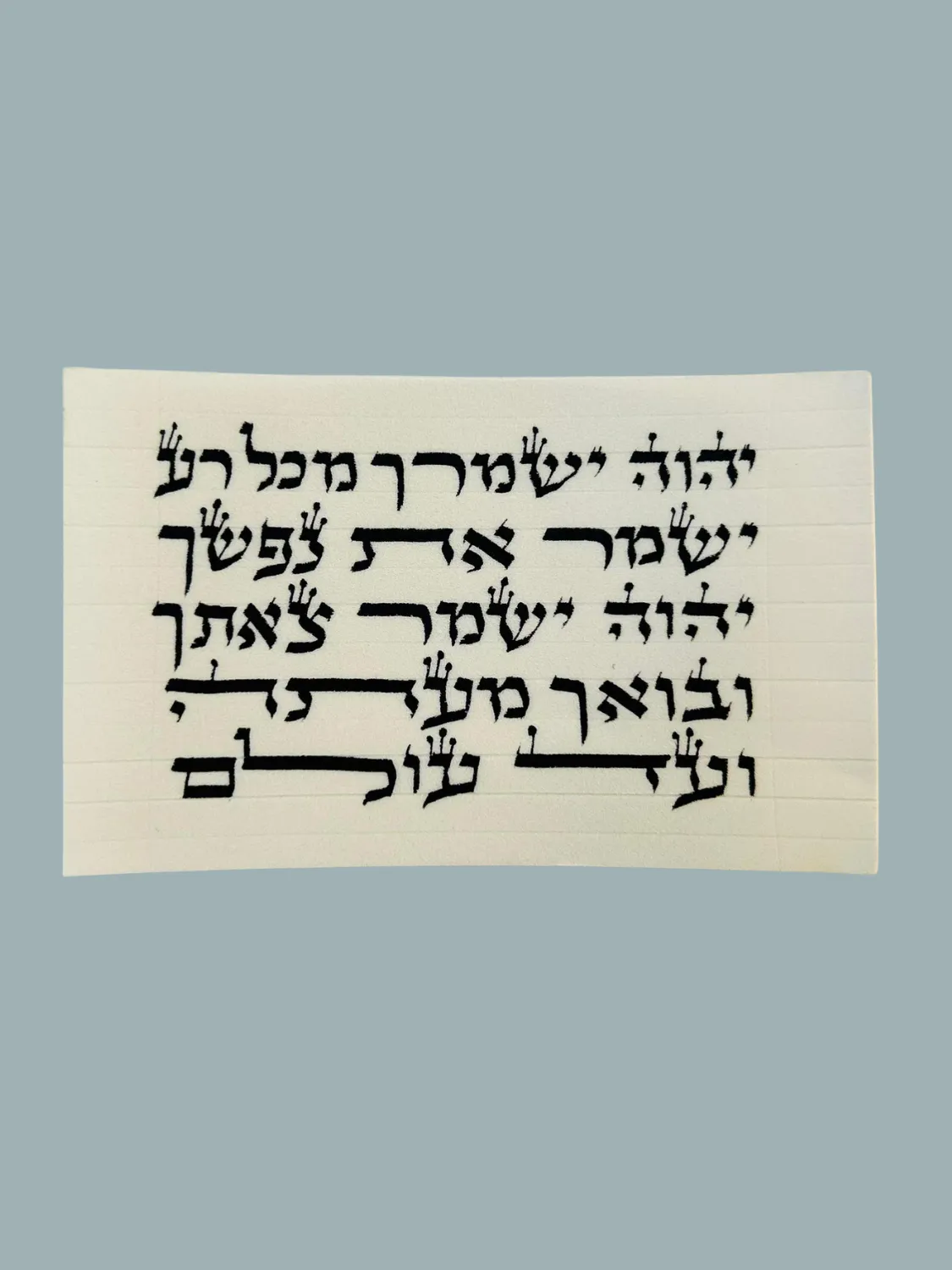
Prayer for Protection
The “Prayer for Protection” (“Tefillat HaHatzlahah” is not a single fixed text in the classical corpus but rather a genre of petitions that date back to the Talmudic and medieval eras. In the Talmud (Berakhot 10b–11a), we find early examples of communal recitation of special prayers for those in peril—during journeys, childbirth, illness, or siege. Over the centuries, rabbis and communities codified standardized formulas. By the medieval period, Ashkenazic and Sephardic mahzorim (prayerbooks) each contained unique “Segulot” (protective rituals) and formulated prayers recited on Friday nights and fast days to invoke Divine guarding.
This prayer comes in laminated parchment and is the size of a credit card. It is intended to fit into any wallet or purse, and thus can and should be carried with you wherever you go. It is the flagship product that Yehuda has become known for in Israel.
Significance in Jewish History
Throughout Jewish history—marked by exile, persecution, and migration—this prayer has been a touchstone of communal solidarity.
In the Crusader era and during the expulsions from Spain (1492), special protective prayers were appended to the liturgy when Jews set out on voyages or passed through hostile territories. In shtetl life of Eastern Europe, any traveler or solitary worshipper would seek a “Tefillah Derech” before departing, reciting appeals to archangels like Michael and Gabriel as heavenly escorts. During the Holocaust, survivors remembered reciting whispered prayers for protection as trains departed or labor camps loomed, linking current perils to ancestral safeguarding rituals.
Today, most people simply keep the prayer card on them at all times, it is a nice way of appealing to Hashem's mercy and requesting His protection at all times.
Small Call to Action Headline
At it's heart, the Prayer for Protection is a supplication, combining the following elements:
Divine Name Invocation: Calling upon the Tetragrammaton (Y‑H‑V‑H) and sometimes the forty-two-letter Name embedded in kabbalistic capsules.
Angelic Partnership: Requesting archangelic escort—Michael for strength, Gabriel for mercy.
Biblical Allusions: Phrases from Psalms (“Hashem Yishmor Tzetcha U’voecha” – “The Lord shall guard your going out and your coming in,” Psalm 121:8) and Exodus (“And I will be with you,” Exodus 3:12).
Communal Inclusion: Though often recited individually, the liturgical version may list the entire congregation as beneficiaries, forging communal unity.
This Prayer in Liturgy
Daily Morning Service (Shacharit): Some congregations insert a brief protective prayer after “Yishtabach.”
Friday Evening (Kabbalat Shabbat): In many Sephardic rites, the leader adds a personal protection petition before “Lecha Dodi.”
Siddur Supplements: Modern prayerbooks often include a stand‑alone “Prayer for Travelers” in the back.